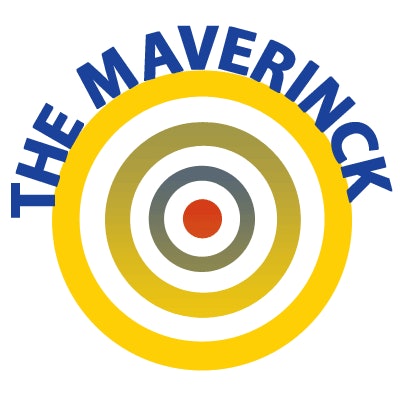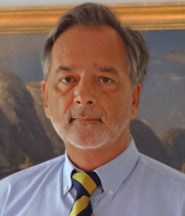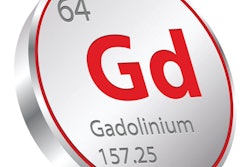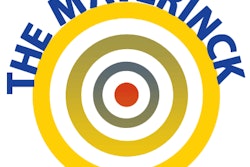
Paul Lauterbur, PhD, the father of MRI, died more than a decade ago. Interestingly, he didn't believe too much in high-tech medicine and refused at the end of his life to undergo dialysis when his kidneys were failing. Nobody and nothing would persuade him. He lived another two years and nine months -- without machines and medical terror. Thirty years ago, I might not have understood this decision, both as a human being and as a medical doctor; today I do.
MRI became a clinical tool in the 1980s but has not changed much since the turn of the millennium. The technique has remained the same, although the appearance of the machines might be different and the hardware and software have become more sophisticated.
MRI has developed into a stable technology and is an important part of medicine. There is a wide range of machines, offered by numerous hardware manufacturers. Today, approximately 50,000 whole-body MR machines are installed worldwide. Most machines per country are found in the U.S., followed by Japan, and then China, Germany, Brazil, Italy, and South Korea. To provide sufficient medical care for a population, 12 to 15 machines per 1 million inhabitants suffice. In countries with oversaturated markets, there is a high risk of overuse and abuse of MRI.
The field strength war?
 Dr. Peter Rinck, PhD, is a professor of radiology and magnetic resonance. He is the president of the Council of the Round Table Foundation (TRTF) and the chairman of the board of the Pro Academia Prize.
Dr. Peter Rinck, PhD, is a professor of radiology and magnetic resonance. He is the president of the Council of the Round Table Foundation (TRTF) and the chairman of the board of the Pro Academia Prize.Despite the commercial availability of 3-tesla equipment for more than 15 years, the majority of routine imaging is done at 1.5 tesla; about two-thirds of all machines in the U.S. and Europe operate at this field strength. Gradient strength is already at its limit, imaging at higher fields is of unproven general advantage, and patients suffer from the noise of 3-tesla machines and unpleasant side effects at ultrahigh fields. There is also a lack of reliable, unbiased outcome studies on which field strengths and technologies are best suited for routine and everyday clinical imaging. The hardware industry and other circles tend to block such studies.
In Europe and North America, between 15% and 18% of machines are 3-tesla and about 66% are 1.5-tesla. In China, the percentages are approximately 8% 3-tesla, 45% 1.5-tesla, and nearly 50% lower than 1.5-tesla -- arguably this is a far healthier distribution for routine diagnostic necessities.
Novel developments introduced by nonmedical actors may even lead to an actual reduction in patient well-being. People from outside medical care -- often industry representatives and health administrators -- have become more influential and have taken over some decision-making. The users, the radiologists, are often simply pushed aside. Medicine is being increasingly commercialized, with limited respect for the human factor.
The cultures of these markets are different. Chinese MR sites, for instance, are less scientific or -- better -- pseudoscientific players but rather more patient- and diagnostic-focused. These countries are also consumer markets, which reflects in their structure.
Changes within societies
The human factor plays a major role in the changes occurring in radiology. A new generation of radiologists starts climbing the career ladder. This generation grew up in a more comfortable and affluent era and was exposed to the digital revolution in a period when the average quality of school and university education declined, so some of them can lack critical insight. Being attached to playing computer games, digital imaging technologies can seem extremely attractive to many of them. On the other hand, working fewer hours and higher salaries also can be important.
During the last 20 years, the generation gap has deepened to a chasm, and both younger medical doctors and older ones complain about of a mutual lack of comprehension of their respective worlds. The suitability of candidates for the very demanding health system is decreasing.
Sales representatives of some companies seem to have reacted to these changes but not company management and developers -- it's easier to deal with the existing present than with an unknown future. Companies target their potential younger customers with completely different marketing methods than 20 years ago.
Another important point is the change of age distribution in the population of Japan and numerous European countries. This different patient clientele requires adaptation of MR machines and examinations.
Simplistic academic research
Research, fashion, and hype are a fundamental element of MR equipment and contrast agent sales not only in Europe and North America.
The credo of "publish or perish" has left a terrible battlefield in the papers on MRI. Checking the contents of radiological journals of the last 30 years shows that few learned papers are relevant. Studies reveal that 90% and 95% were simply wrong, senseless, and useless; still, they have influenced the use of MRI and medicine at large. This will not change in the near future, because climbing the entire career ladder in Europe and North America is based on this spiel.
Fashions that came and went again during the last 35 years were, for instance, MR spectroscopy -- the combination of high-resolution imaging and depiction of metabolism. MR spectroscopy has more or less disappeared from the stage.
Another idea in the earliest times of MRI, even before, was tissue characterization by in vivo relaxation time measurements. This was 40 years ago, and the methods had gone out of date already in the mid-1980s: They didn't work in a clinical environment. More than 20 years later they were reinvented, but even dressed in new clothes, they cannot be validated in independent trials and are mostly inadequate and deficient in precision and accuracy. Still, companies jump on this bandwagon because they don't have anything more novel to offer. Outdated ideas are repackaged and sold with marketing gags as revolutionary developments.
Functional MR imaging (fMRI) was invented in the early 1990s, followed by MR tractography and the 1 billion euro Connectome Project. All are prone to disappoint. The most common software packages for fMRI analysis resulted in false-positive rates of up to 70%. These results question the validity of some 40,000 published fMRI studies and may have a large impact on the interpretation of neuroimaging results.
Many people believe that numbers (data) are the truth. Many people do not understand how the numbers were acquired and what they stand for. Nature, biology, and medicine are more complex and don't care much about numbers.
For decades, the euphoria over new spin-off techniques of MRI has been reliably followed by disillusionment. Exaggerations are, and were, widespread. There has been progress, but much of the trust of the people who actually count on the developers and researchers was lost. They were taken on a constant rollercoaster ride into nowhere. For some time, new developments in MRI have been merely apps and gadgets.
Editor's note: This column is based on the opening lecture at the Contrast-Enhanced Biomedical Imaging -- Standing at the Crossroads: 40 Years of MR Contrast Agents meeting, held in Mons, Belgium, in May 2019. Look for the second part, which will follow next week and will look at contrast agents.
Dr. Peter Rinck, PhD, is a professor of radiology and magnetic resonance and has a doctorate in medical history. He is the president of the Council of the Round Table Foundation (TRTF) and the chairman of the board of the Pro Academia Prize.
The comments and observations expressed herein do not necessarily reflect the opinions of AuntMinnieEurope.com, nor should they be construed as an endorsement or admonishment of any particular vendor, analyst, industry consultant, or consulting group.



















